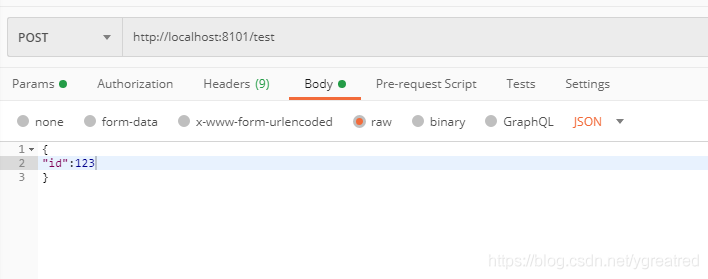spring boot RestTemplate 发送get请求踩坑
闲话少说,代码说话
RestTemplate 实例
手动实例化,这个我基本不用
|
1
|
RestTemplate restTemplate = new RestTemplate(); |
依赖注入,通常情况下我使用 java.net 包下的类构建的 SimpleClientHttpRequestFactory
|
1
2
3
4
5
6
7
8
9
10
11
12
13
14
15
16
17
18
19
20
21
22
|
@Configurationpublic class RestConfiguration { @Bean @ConditionalOnMissingBean({RestOperations.class, RestTemplate.class}) public RestOperations restOperations() { SimpleClientHttpRequestFactory requestFactory = new SimpleClientHttpRequestFactory(); requestFactory.setReadTimeout(5000); requestFactory.setConnectTimeout(5000); RestTemplate restTemplate = new RestTemplate(requestFactory); // 使用 utf-8 编码集的 conver 替换默认的 conver(默认的 string conver 的编码集为 "ISO-8859-1") List<HttpMessageConverter<?>> messageConverters = restTemplate.getMessageConverters(); Iterator<HttpMessageConverter<?>> iterator = messageConverters.iterator(); while (iterator.hasNext()) { HttpMessageConverter<?> converter = iterator.next(); if (converter instanceof StringHttpMessageConverter) { iterator.remove(); } } messageConverters.add(new StringHttpMessageConverter(Charset.forName("UTF-8"))); return restTemplate; }} |
请求地址
get 请求 url 为
|
1
|
http://localhost:8080/test/sendSms?phone=手机号&msg=短信内容 |
错误使用
|
1
2
3
4
5
6
7
8
9
|
@Autowiredprivate RestOperations restOperations;public void test() throws Exception{ String url = "http://localhost:8080/test/sendSms"; Map<String, Object> uriVariables = new HashMap<String, Object>(); uriVariables.put("phone", "151xxxxxxxx"); uriVariables.put("msg", "测试短信内容"); String result = restOperations.getForObject(url, String.class, uriVariables);} |
服务器接收的时候你会发现,接收的该请求时没有参数的
正确使用
|
1
2
3
4
5
6
7
8
9
|
@Autowiredprivate RestOperations restOperations;public void test() throws Exception{ String url = "http://localhost:8080/test/sendSms?phone={phone}&msg={phone}"; Map<String, Object> uriVariables = new HashMap<String, Object>(); uriVariables.put("phone", "151xxxxxxxx"); uriVariables.put("msg", "测试短信内容"); String result = restOperations.getForObject(url, String.class, uriVariables);} |
等价于
|
1
2
3
4
5
6
|
@Autowiredprivate RestOperations restOperations;public void test() throws Exception{ String url = "http://localhost:8080/test/sendSms?phone={phone}&msg={phone}"; String result = restOperations.getForObject(url, String.class, "151xxxxxxxx", "测试短信内容");} |
springboot restTemplate访问get,post请求的各种方式
springboot中封装好了访问外部请求的方法类,那就是RestTemplate。下面就简单介绍一下,RestTemplate访问外部请求的方法。
get请求
首先get请求的参数是拼接在url后面的。所以不需要额外添加参数。但是也需要分两种情况。
1、 有请求头
由于 getForEntity() 和 getForObject() 都无法加入请求头。所以需要请求头的连接只能使用 exchange() 来访问。代码如下
|
1
2
3
4
5
6
7
8
9
10
11
12
13
14
|
public JSONObject test(){ try { RestTemplate re = new RestTemplate(); HttpHeaders headers = new HttpHeaders(); String url = "http://test.api.com?id=123"; headers.set("Content-Type","application/json"); HttpEntity<JSONObject> jsonObject= re.exchange(url, HttpMethod.GET,new HttpEntity<>(headers),JSONObject.class); log.info("返回:{}",jsonObject.getBody()); return jsonObject.getBody(); }catch (Exception e){ log.error(e.getMessage()); } return null; } |
2、 无请求头
无需请求头的可以用三个方法实现。getForEntity() 和 getForObject() 还有 exchange() 都可以实现。下面讲前两种用的比较多的。
getForEntity()
|
1
2
3
4
5
6
7
8
9
10
11
12
|
public JSONObject test(){ try { RestTemplate re = new RestTemplate(); String url = "http://api.help.bj.cn/apis/alarm/?id=101020100"; HttpEntity<JSONObject> jsonObject= re.getForEntity(url,JSONObject.class); log.info("返回:{}",jsonObject.getBody()); return jsonObject.getBody(); }catch (Exception e){ log.error(e.getMessage()); } return null; } |
getForObject()
|
1
2
3
4
5
6
7
8
9
10
11
12
|
public JSONObject test(){ try { RestTemplate re = new RestTemplate(); String url = "http://api.help.bj.cn/apis/alarm/?id=101020100"; JSONObject jsonObject= re.getForObject(url,JSONObject.class); log.info("返回:{}",jsonObject); return jsonObject; }catch (Exception e){ log.error(e.getMessage()); } return null; } |
post请求
post请求也分几种情况
1、参数在body的form-data里面
|
1
2
3
4
5
6
7
8
9
10
11
12
13
14
15
16
|
public static JSONObject test(){ try { RestTemplate re = new RestTemplate(); String url = "http://localhost:8101/test"; HttpHeaders headers = new HttpHeaders(); headers.setContentType(MediaType.MULTIPART_FORM_DATA); MultiValueMap<String, Object> loginJson = new LinkedMultiValueMap<>(); loginJson.add("id", "123"); JSONObject jsonObject= re.postForObject(url,new HttpEntity<>(loginJson,headers),JSONObject.class); log.info("返回:{}",jsonObject); return jsonObject; }catch (Exception e){ log.error(e.getMessage()); } return null; } |
还可以把 postForObject 换成 postForEntity
2、参数在body的x-www-from-urlencodeed里面
只需要把请求头的setContentType改成下面即可
|
1
|
headers.setContentType(MediaType.APPLICATION_FORM_URLENCODED); |
|
1
2
3
4
5
6
7
8
9
10
11
12
13
14
15
16
|
public static JSONObject test(){ try { RestTemplate re = new RestTemplate(); String url = "http://localhost:8101/test"; HttpHeaders headers = new HttpHeaders(); headers.setContentType(MediaType.APPLICATION_FORM_URLENCODED); MultiValueMap<String, Object> loginJson = new LinkedMultiValueMap<>(); loginJson.add("id", "123"); JSONObject jsonObject= re.postForObject(url,new HttpEntity<>(loginJson,headers),JSONObject.class); log.info("返回:{}",jsonObject); return jsonObject; }catch (Exception e){ log.error(e.getMessage()); } return null; } |
3、参数在body的raw里面

|
1
2
3
4
5
6
7
8
9
10
11
12
13
14
15
16
17
|
public static JSONObject test(){ try { RestTemplate re = new RestTemplate(); String url = "http://localhost:8101/test"; HttpHeaders headers = new HttpHeaders(); headers.set("Content-Type","application/json"); JSONObject jsonObject = new JSONObject(); jsonObject.put("id","1"); JSONObject jsonObject1 = restTemplate .postForObject(url,new HttpEntity<>(jsonObject,headers),JSONObject.class); log.info("返回:{}",jsonObject1); return jsonObject; }catch (Exception e){ log.error(e.getMessage()); } return null; } |
以上为个人经验,希望能给大家一个参考,也希望大家多多支持服务器之家。
原文链接:https://blog.csdn.net/MitKey/article/details/53956520















